According to my Peterson Field Guide to Birds of North America, the Common Goldeneye (Bucephala clangula) is “fairly common” but the Barrow’s Goldeneye (Bucephala islandica) is “scarce.” They also list the third member of the genus Bucephala, the Bufflehead (Bucephala albeola), as “common.”
I find this categorization to be pretty accurate, so whenever I see the Common Goldeneye, I look for any Barrow’s Goldeneye that may be hanging with their more common cousin.
Here is a pair of Common Goldeneye, the drake has a glossy green head with a large round white spot before the eye. The female has a dark brown, fairly round head and a gray bill.
The Barrow’s Goldeneye drake, on the other hand, has a glossy purple or blueish head and a white facial crescent shaped spot. The female has a steeper forehead and, from late November until May, has a yellow-orange or pinkish-orange bill.
You can see that the Common Goldeneye drake lacks the mostly black scapulars with white spots and the short black bar extending downward at the side of the breast shown on the Barrow’s Goldeneye above.
Female Barrow’s Goldeneye with breeding experience exhibit high fidelity to previous nest sites and females without previous breeding experience prospect for potential nest cavities in summer prior to a nesting attempt1. This seems to be true of all three of these species of duck.
All three ducks of the Bucephala genus being cavity nesting species, are fighting habitat degradation caused by logging activities that decrease the number of large trees offering nesting sites. Since 60% of the world population of Barrow’s Goldeneye breeds and winters in British Columbia1 and this species shows high nest site fidelity, we are lucky that they readily use man-made nest boxes that may be useful in any recovery program.
The loss of habitat and degradation of Canada’s Boreal Forest is of special concern for these birds as well. For more information on the threat of the Tar Sands development and proposed pipeline read this post.
Here’s one last look at the beautiful Barrow’s Goldeneye Drake.
I hope you are able to spot the Barrow’s Goldeneye even if they are “scarce,” before they become “rare.”
References: 1 Birds of North America Online


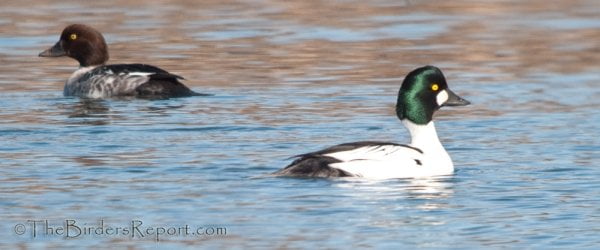
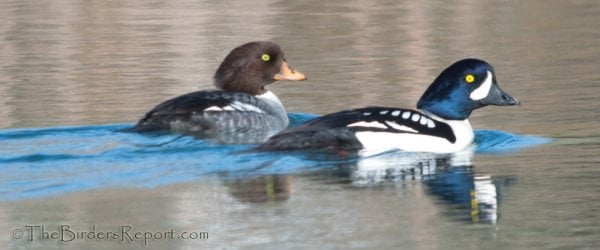






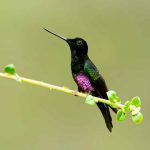
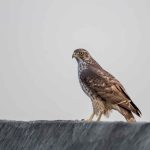

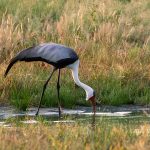

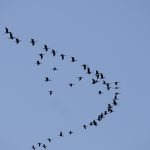
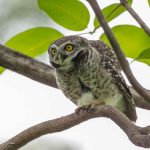
Great photos! Barrow’s far outnumbers Common on my local stomping grounds in British Columbia; like all birds, they’re scarce only where they’re not common.
@Rick of course they do, you guys up there in BC are hording 60% of the worlds population of Barrow’s Goldeneyes according to Birds of North America Online. I’m just glad to see that you share them during the winter 😉
i shot a barrows goldeneye here in northern colorado this past duck season. my taxidermist says its pretty rare to see a barrows goldeneye in colorado. i am having him stuffed.
shot some goldeneyes on farm pond in Iowa a few days ago. however some of the ducks looked like males but their heads were brown and had the round white marks in front and below eye. are these juvenile?
Yes, those are birds that were hatched in 2012.
Just out of curiosity, have you ever eaten a goldeneye? Are they any good?
i shot a pair of barrows goldeneyes yesterday 1/12/2014 in southern indiana. first time ive seen or heard of them.
Wow. Any photos of the male or of the female ‘s spread wing?
I don’t have any spread wing shots of the Barrow’s but here are a few from Flickr:
Female: http://www.flickr.com/photos/gudmann/8037189821/lightbox/
Male: http://www.flickr.com/photos/chuqvr/8334223670/lightbox/
Male in flight: http://www.flickr.com/photos/pennyhallphotography/8625552979/lightbox/
http://www.flickr.com/photos/pennyhallphotography/8626660802/lightbox/
I’m confused. Are those photographs of the birds you shot, or of different individuals? What did you do with the specimens that you can’t take a photograph of the female’s spread wing?
Thanks —
Rick, Larry didn’t shoot (with guns) any birds. What I’ve seen of hunters who comment here is that they tend to come for some identification help, occasionally talk about what they shot, and then don’t come back.
Thanks Corey for responding to this string. I was confused myself. I was wondering why a duck hunter would comment on this post so I ignored that comment and tried to answer Rick’s question. Are hunters unable to identify the ducks they shoot even when they have them in hand? I thought they were so good at ID that they could identify waterfowl a half hour before sunrise well enough to shoot them! Maybe a field guide would be in order?
@Larry: +1
Aha — I understand now. Larry answered a question I posed to Jeff, who seems to have vanished.
Larry, I’m sure you know about the various spread-wing websites out there; here’s one of the best: http://digitalcollections.pugetsound.edu/cdm/featuredsearches/collection/slaterwing
Too bad we’ll never know about those Indiana goldeneye.
Thank you for the information Rick. I actually knew nothing about the spread-wing phenomenon. I thought when you used the term “spread-wing” you were talking about the pose of a living bird in photography.
I am still a bit confused as to Jeff’s comment that he had never seen or heard of Barrow’s Goldeneyes yet he shot a pair of them. When I checked on the bag limits for Southern Indiana I got this information:
Daily bag limit for ducks is six. This includes any combination of goldeneyes, ruddy ducks, ring-necked ducks, buffleheads, gadwalls, long-tailed ducks, scoters, teal, wigeon and shovelers. Included in the daily limit of six are additional restrictions on the following:
“Mallards 4 (not more than two females), 3 wood ducks,
2 pintail, 2 canvasback, 2 redheads, 3 scaup, 1 black duck, 1 mottled duck
Possession limit triple the daily bag.”
If there is a bag limit of only one Black Duck or Mottled Duck and you shoot a pair of ducks that you cannot ID. How do you know if you have exceeded your limit of that species? Can you distinguish between a Mottled duck female and a Gadwall female? Or a female Mallard (limit 2) and the female of any other duck species for that matter? How about a Canvasback and a Redhead? Can most waterfowl hunters distinguish between these different species at the break of dawn when they are flying overhead at 50 mph? I doubt it.
I just want to say that not am I only a huge waterfowl hunter, I take pride in duck ID. I’ve been hunting ducks for a long time and can identify almost any duck flying over head. Even at great distances. I can tell the species by not only there colors and patterns, but shape, size, and the way they fly. I know there are a lot of duck hunters out there just like me, but I also know that there are other duck hunters out there who just kill any duck with wings. Thanks
Thank you for your thoughtful reply Kyle. I know that there are many excellent and conscientious hunters out there and as a conservationist, I support their right to hunt. Unfortunately, not only are there waterfowl hunters out there that shoot at anything with wings at any distance, numerous U.S. and Canada research studies have been published involving trained observers that record the harvest efficiency of thousands of duck hunters in the field. These studies document wounding rates of more than 30 percent (http://gfp.sd.gov/hunting/waterfowl/wounding-losses.aspx). As a duck hunter I’m sure you know these birds are known as cripples, birds shot but not killed and not retrieved. My friend Ingrid Taylar wrote a very enlightening piece on this subject here: http://www.thewildbeat.com/2013/10/fly-away-home-and-safe-2013/
Very interesting peice, thanks for sharing! Unfortunately in the sport of duck hunting, shooting a cripple is rather common. Even more common with geese. As a ethical hunter I beleive it is my job to do my best at making clean kills, and put forth my best effort in retrieving downed birds. I am a “anti sky buster” for lack of a better term lol. We only shoot at birds that are “Decoying” rather than pass shooting. On a lighter note, here’s an old saying my father would always tell me: “save a cripple, shoot a sky buster”…. I also hunt with my dog who helps tremendously at retrieving birds.
Also In that article he talked about hunting pressure and what it has done to the patterns of the birds. I have seen first hand just that exactly. I grew up hunting the eastern part of the state (colorado) with my father, there was always large numbers of waterfowl. In the last few years the hunting pressure has gotten tremendously greater, mainly because of the multiple military bases around, but it’s almost as if the birds just keep on moving right through the state and dont stay for long periods of time anymore. Anyways, sorry that ended up being a little lengthy. Thanks again
I live in Buena vista colorado and there is about 25 golden eyes on the river I just don’t know if I can shoot them or not can anyone help??